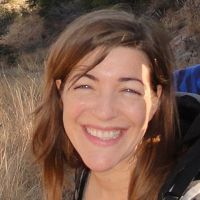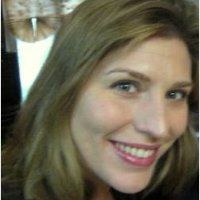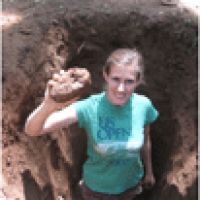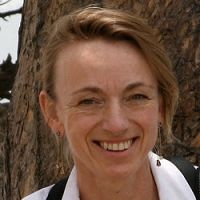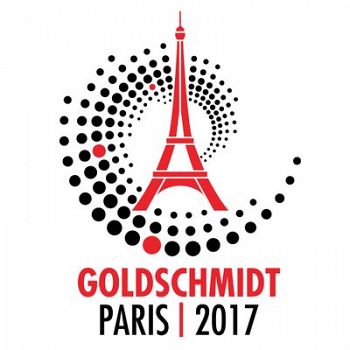Goldschmidt 2017
Goldschmidt 2017 will be held in Paris, France on August 13-18, 2017.
Le Palais des Congrès de Paris, Paris, France
-
Catalina-Jemez, Luquillo, Reynolds, INVESTIGATOR
-
Calhoun, Shale Hills, INVESTIGATOR, COLLABORATOR
-
Luquillo, INVESTIGATOR
-
Shale Hills, INVESTIGATOR, COLLABORATOR
-
National, INVESTIGATOR, STAFF
Goldschmidt 2017 will be held in Paris, France on August 13-18, 2017. The conference, an annual, international conference on geochemistry, is organized into 23 themes covering a wide range of topics.
For more information on this conference please visit https://goldschmidt.info/2017/index.
****************
Deep Carbon Observatory workshop: Keep Your Samples Alive (and Connected)!
Tuesday, 15 August 2017, from 12:45-14:30 in room 341
Does your research involve collecting, analyzing, and storing physical samples such as rock or mineral specimens, cores of sediment, soil, ice, and other materials, and water or gas samples? If the answer is yes, please join us for a free lunch workshop at the 2017 Goldschmidt Conference to learn about tools available for registering your samples. You also will learn about the benefits of building your personal sample catalog and the value of using the International Geo Sample Number (IGSN) for citing samples in publications.
Join us for a free lunch workshop on Tuesday, 15 August 2017, from 12:45-14:30 in room 341. The workshop, led by Kerstin Lehnert (Lamont-Doherty Earth Observatory, USA), will include a demonstration of existing online tools for sample registration and time for questions and discussion. Don’t miss this valuable opportunity to make sense of your samples!
The Deep Carbon Observatory, the System for Earth Sample Registration (www.geosamples.org), the iSamples Research Coordination Network, and IGSN are sponsors of the workshop. For additional information about sample registration is available here.
Sessions related to CZ science:
- Session 09B: Carbonate weathering impacts on critical zone evolution: rapid transformations of structure and function on decade to millennial timescales
- Session 11J: Critical zone export to streams and ground water as indicator for CZ functions in the Anthropocene: Challenges & opportunities
- Session 09J: Tracking Earth surface processes: Isotope tracing of particulate and dissolved fluxes
Session 09B: Carbonate weathering impacts on critical zone evolution: rapid transformations of structure and function on decade to millennial timescales
Convenors: Pamela Sullivan, Heather Buss
Keynote speaker: Jerome Gaillardet (Institut de Physique du Globe de Paris)
Invited Speaker: Lixin Jin (University of Texas)
Carbonate weathering rates are highly sensitive to modifications to salinity, water volumes, flow paths, pCO2, temperature and residence time that result from changes in climate, sea level and land cover. Over geologic time carbonate weathering is considered not to affect atmospheric CO2, yet at short-timescales (<3000 years) climatic and anthropogenic disturbances may impact global atmospheric carbon cycles. The structure and function of carbonate systems have been evaluated in terms of salinity, the presence/absence of soil/vegetation, the timing and amount of rainfall, temperature patterns and alterations to the ratio of calcite to dolomite weathering yet a unifying conceptual model has yet to emerge on the response of carbonate weathering in the Critical Zone to climate and land use/land cover change. We invite contributions that tackle carbonate weathering and its impact on the evolution of the Critical Zone, particularly those that integrate processes across disciplines including hydrogeology, biogeochemistry, geophysics, and geomorphology and those that employ isotope and modeling techniques to examine Critical Zone processes
Session 09J: Tracking Earth surface processes: Isotope tracing of particulate and dissolved fluxes
Convenors: Grit Steinhoefel, Talitha Santini, Ashlee Dere, Pamela Sullivan, Claude Hillaire-Marcel, Mark Baskaran
Keynote: François Chabaux (University of Strasbourg)
The breakdown of rock into soil is controlled by the complex interplay of geochemical, geomorphological, hydrological and biological processes together with the effect of human activities. The identification and quantification of the processes that govern the evolution of the Critical Zone– Earth’s living skin – requires multiple tools from across an array of disciplines. The application of multiple isotope systems, including traditional isotopes (e.g., of C, H, O, S, Sr), cosmogenic nuclides (e.g. 10Be, 26Al), fallout radionuclides (e.g. 137Cs, 239/240Pu), short-lived natural U and Th-series radionuclides (e.g., 234U, 210Po, 228Th, 228Ra, 210Pb and 226Ra), and non-traditional stable isotopes (e.g., of Li, Mg, Si, Ca, Fe, Cr, Zn, Cu), together with other geochemical and mineralogical tracers (e.g., element ratios, alteration indices), enable us to decipher linkages and mechanisms of weathering processes and quantify dissolved and particulate fluxes across varying lithologies, tectonic settings, climatic conditions and anthropogenic influences– we call this initiative CZ-Tope. The goals are to identify dominant weathering and erosion drivers, to quantify rates of weathering, erosion, and sediment accumulation, and to consider the implications of these processes for global biogeochemical cycles. This session invites contributions investigating weathering, erosion and sediment accumulation across broad spatial (mineral to catchment to depositional basin) and temporal scales (days to months to millennia and beyond) and in diverse environmental settings. Approaches may include laboratory experiments, modeling, development and application of proxies, and field investigations and inter-comparisons.
Session 11J: Critical zone export to streams and ground water as indicator for CZ functions in the Anthropocene: Challenges & opportunities
Convenors: Julia Perdrial, Paul Floury, Philippe Négrel, Sophie Opfergelt
Keynote: Jérôme Gaillardet (Institut de Physique du Globe de Paris)
Pollution, droughts, floods, recharge processes and water provenance, ground-surface water connection, weathering and erosion rate are deeply connected to critical zone (CZ) structure and function. To trace important processes such as ground water recharge, geochemical reactions e.g. along flow paths as well as water provenance and transit times several geochemical tools (i.e. major, trace elements, isotopes) are used. However, how much can we learn about CZ processes from probing stream and ground water and what are the limitations? How can we integrate temporal (inter-annual, seasonal, diel) variations, the balance between event and base flow dynamics to trace the variety of (bio)geochemical processes shaping the CZ? We invite contributions that link field observations and /or models to biogeochemical, hydrological, ecological, biological and pedological processes in traditional and novel ways to relate water dynamics back to CZ function in a time of accelerated global change.
Goldschmidt 2017
Explore Further
